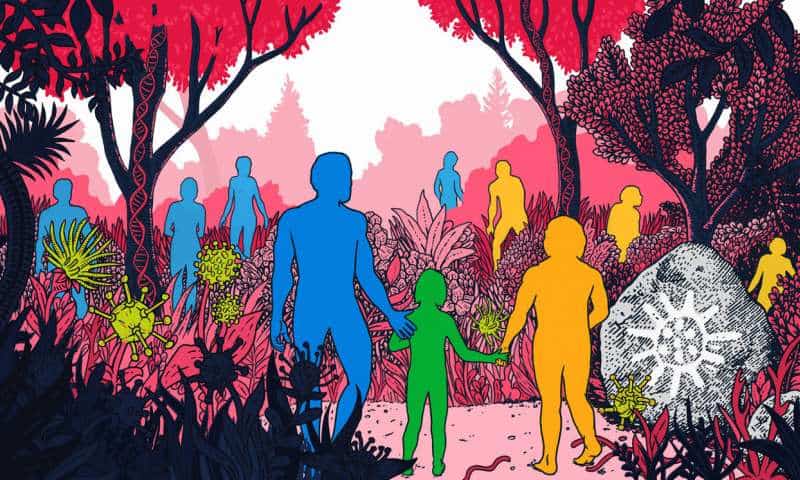Neanderthals and humans were so closely related that viruses easily jumped between the two species — but despite the obvious downsides, the interbreeding also gave us humans Neanderthal genes that prime the immune system against the viruses.

Credit: Claire Scully.
Neanderthals lived outside of Africa for hundreds of thousands of years, which allowed their immune system to adapt against infectious diseases present in Europe and Asia. However, when humans migrated to Europe for the first time, they were completely vulnerable to ancient RNA viruses. Cue in the interbreeding.
Scientists are confident that the two species interbred at least as early as 50,000 years ago. Everyone in this world, apart from sub-Saharan populations, have up to 2% Neanderthal DNA as a result of this intimate encounter between the two species.
In order to find evidence of ancient diseases that once affected our species, researchers at Stanford University combed through the human genome, zooming in on 4,500 genes in modern humans that are known to interact in some way with viruses, which the researchers compared against a database of sequenced Neanderthal DNA. The analysis identified 152 fragments of those from modern humans that were also found in Neanderthals.
These fragments, which were inherited from Neanderthals, interact with modern day HIV, Influenza A, and Hepatitis C viruses — all of which RNA viruses. The obvious conclusion is that these genes protected us against the ancient variety of RNA viruses that humans must have encountered while they were still fresh out of Africa, the authors reported in the journal Cell.
“Our research shows that a substantial number of frequently occurring Neanderthal DNA snippets were adaptive for a very cool reason,” Dmitri Petrov, an evolutionary biologist at Stanford’s School of Humanities and Sciences, said in a statement. “Neanderthal genes likely gave us some protection against viruses that our ancestors encountered when they left Africa.”
“It made much more sense for modern humans to just borrow the already adapted genetic defenses from Neanderthals rather than waiting for their own adaptive mutations to develop, which would have taken much more time,” said David Enard, a former postdoctoral fellow in Petrov’s lab.

Neanderthal interbreeding was shaped by viral infections. Credit: Enard & Petrov.
What’s more, different viruses influenced genetic swapping between the two species. This makes sense because Neanderthals and modern humans interbred in multiple episodes and in multiple locations throughout prehistory. In each instance, different viruses must have evolved, and so did our defenses.
“It’s similar to paleontology,” Enard. “You can find hints of dinosaurs in different ways. Sometimes you’ll discover actual bones, but sometimes you find only footprints in fossilized mud. Our method is similarly indirect: Because we know which genes interact with which viruses, we can infer the types of viruses responsible for ancient disease outbreaks.”
It’s worth mentioning that the flow of genes and diseases went in both directions. A previous study found that when humans arrived in Europe, they brought with them a slew of tropical diseases that infected ill-prepared Neanderthals.
Elsewhere, at the New York Genome Center, researchers found that HPV16 or genital warts, one of the most common sexually transmitted diseases, came from Neanderthals. After humans and Neanderthals split, each species developed their own HPV strains. Once they met up thousands of years later, though, the Neanderthal variety was acquired by humans and quickly spread.
Type 2 diabetes, Crohn’s disease, lupus, allergies, and other ailments are also believed to be the result of Neanderthal interbreeding.









